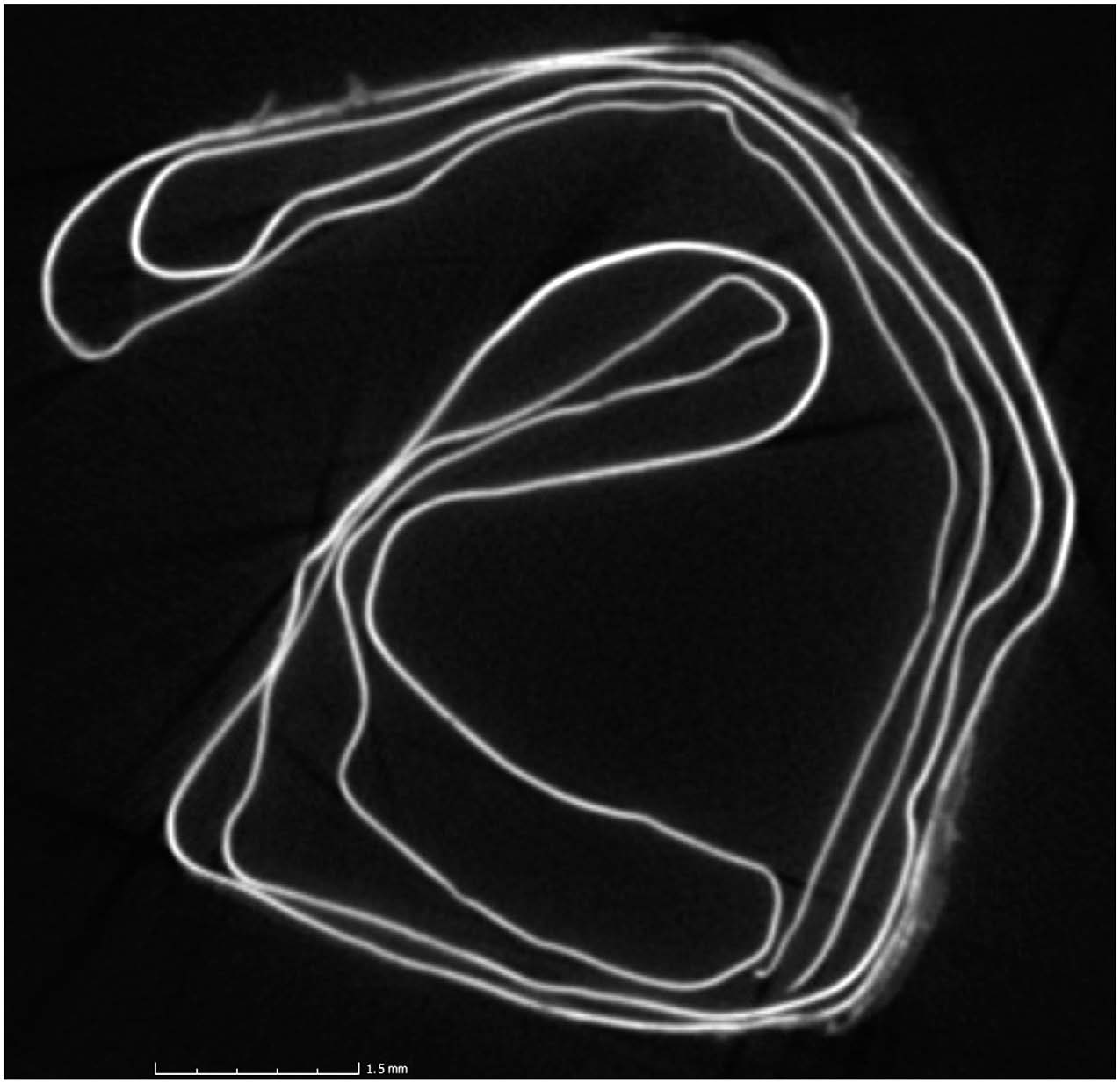Supporting Open Data Policies – The Jerash Silver Scroll
New Digital Data published on FigShare by the Danish-German Jerash Northwest Quarter Project and colleagues from the Zuse Institute Berlin and Ägyptisches Museum und Papyrussammlung in Berlin.


In 2015, the Danish-German Jerash Northwest Quarter Project headed by professor Achim Lichtenberger (Münster University) and professor and center director Rubina Raja together with colleagues published a silver scroll amulet with writing on it. The scroll stemmed from a house destroyed by the 749 CE earthquake, which had been excavated in 2014. The house was published in Antiquité Tardive in 2016 (Lichtenberger et al. 2016). The results of the digital unfolding and the linguistic interpretation of the scroll were published in respectively Nature Scientific Reports and the journal Syria (Barfod et al. 2015; Gordon et al. 2016).
Over the years, techniques have developed immensely and therefore a new attempt to unfold the scroll was recently undertaken. The results are currently under publication, but the data relating to both unfoldings (the 2015 unfolding and the 2020 unfolding) have already been made available as open data on FigShare (data from the 2015 unfolding: https://doi.org/10.6084/m9.figshare.12136380.v1; data from the 2020 unfolding: https://doi.org/10.6084/m9.figshare.12145236.v1). This supports the intention of the Danish-German Jerash Northwest Quarter Project as well as that of Centre for Urban Network Evolutions (UrbNet) to work actively for an Open Data agenda in the humanities in order to facilitate access to data across borders and disciplines.
The work was jointly undertaken by:
- Daniel Baum (Zuse Institute Berlin (ZIB), Department Visual and Data-Centric Computing, Germany)
- Felix Herter (Ägyptisches Museum und Papyrussammlung (ÄMP), Berlin, Germany)
- John Møller Larsen (Independent scholar)
- Achim Lichtenberger (Institute of Classical Archaeology and Christian Archaeology, Archaeological Museum, Westfälische Wilhelms-Universität Münster, Germany)
- Rubina Raja (Department of Classical Studies and Centre for Urban Network Evolutions, Aarhus University, Denmark)
References
Barfod, G. H., J. M. Larsen, A. Lichtenberger & R. Raja. 2015. ‘Revealing text in a complexly rolled silver scroll from Jerash with computed tomography and advanced imaging software’, Nature Scientific Reports, 5, https://doi.org/10.1038/srep17765
Gordon, R. L., J. M. Larsen, A. Lichtenberger & R. Raja. 2016. ‘An Umayyad period magical amulet from a domestic context in Jerash, Jordan’, Syria, 93: 369–386, full text on Academia
Lichtenberger, A., R. Raja, C. Eger, G. Kalaitzoglou & A. H. Sørensen. 2016. ‘A Newly Excavated Private House in Jerash: Reconsidering Aspects of Continuity and Change in Material Culture from Late Antiquity to the Early Islamic Period’, Antiquité Tardive, 24: 317–359, full text on Academia.
Further links and contact information
The Danish-German Jerash Northwest Quarter Project
Zuse Institute Berlin (ZIB), Department Visual and Data-Centric Computing
Ägyptisches Museum und Papyrussammlung (ÄMP)
Centre for Urban Network Evolutions (UrbNet)
For further information, please contact professor Rubina Raja (contact information available here) and professor Achim Lichtenberger (contact information available here).
